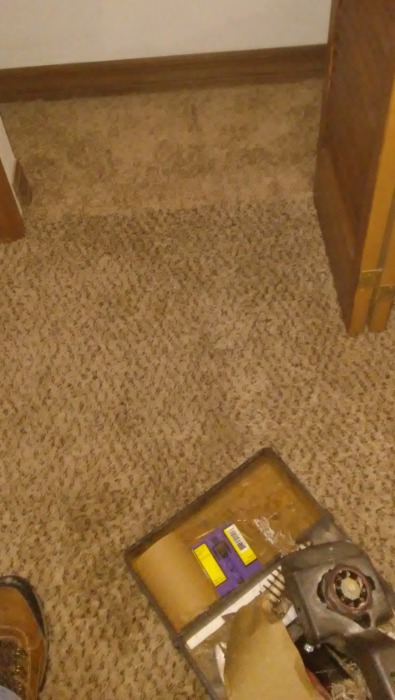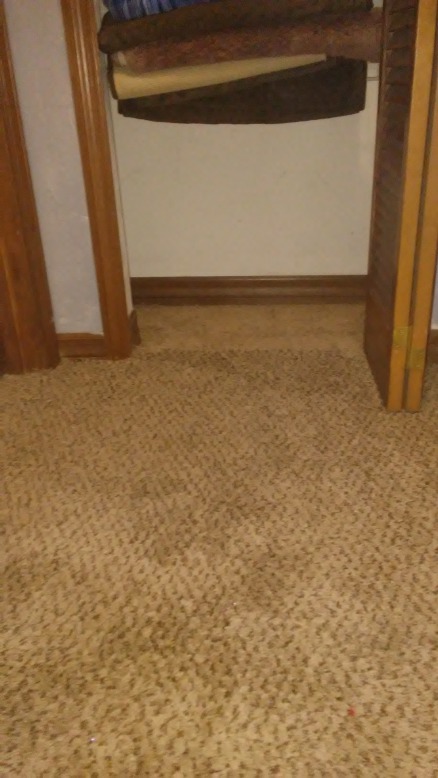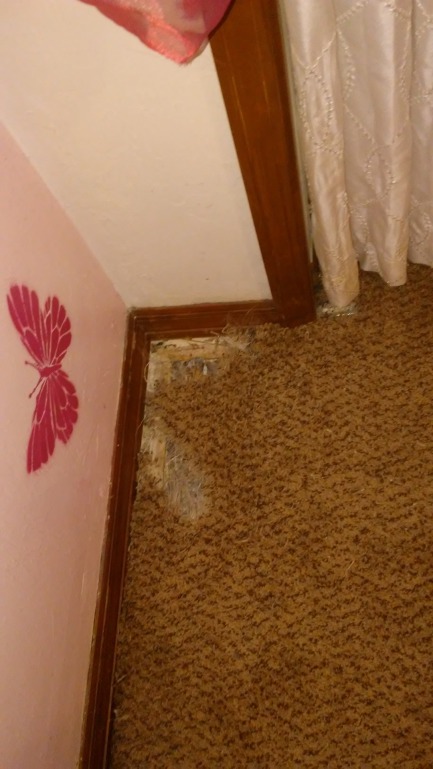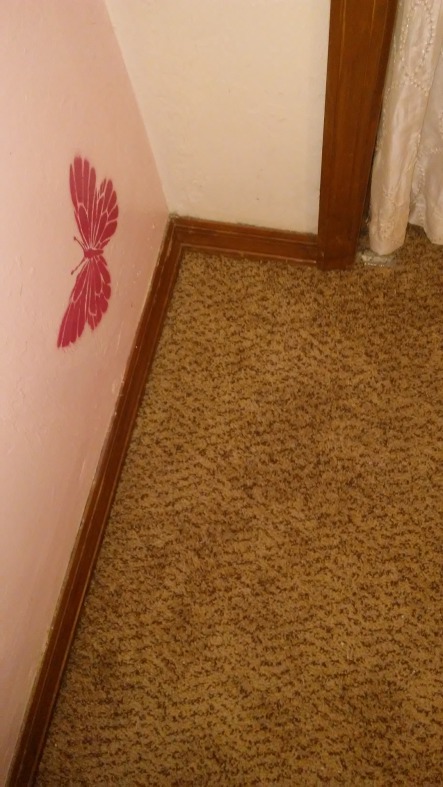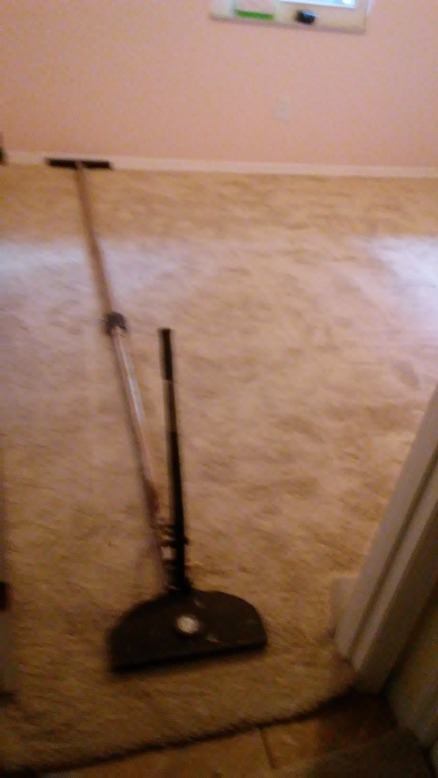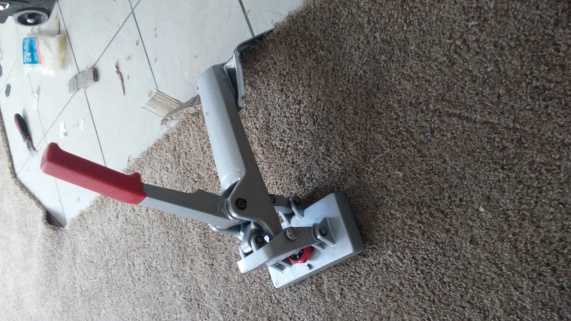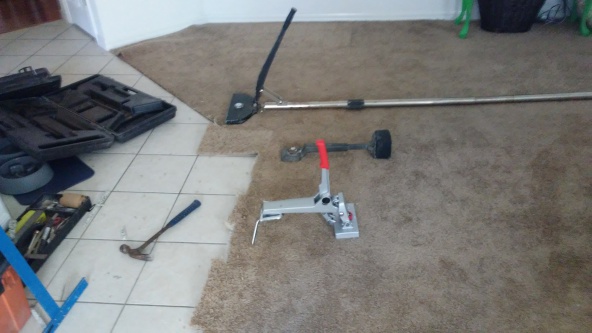
How To Repair Carpet Yourself?
By the time you buy the tools, materials and supplies necessary to do a quality carpet repair you will have more than tripled the cost of having a carpet repair specialist perform this tedious task for you. Not to mention; it is a skill that takes considerable time to perfect. If you must insist on DIY'ing this project we will provide you with the "step by step", a list of tools and supplies and our contact info for your inevitable change of heart:
Step 1: Remove a suitable "donor piece" of carpet from a closet. If done correctly it should look like this:
Step 2: Replace the closet carpet with the closest match obtainable. Typically it is not possible to match the existing carpet and that's why we use the carpet in a closet- so that the carpet that doesn't match is hidden from sight as follows:
Step 3: Cut out the damaged carpet:
Step 4: Use the carpet from the closet to patch the damaged area:
How to Stretch Carpet Yourself:
Step 1: Use your Power Stretcher to stretch the carpet in all directions, being careful to observe "The Principles of Stretching Carpet":
Optional Step 1: Use your crab style stretcher in rooms with furniture or other difficult layouts:
Step 2: Use your "kicker" to stretch tight areas like small closets, coves and halls:
Step 3: Trim off excess carpet and tuck carpet around the perimeter of the room:
For most carpet repairs you will need the following tools and supplies:
Power Stretcher
Crab Stretcher
Kicker
Carpet Seaming Iron
Carpet Seaming Tape
Kool Glide Carpet Seamer
Kool Glide Thermal Seaming Tape
Kool Glide Thermal Glue Sticks
Pam Tight High Temp Glue Gun
Staight Edges
Squares
Square Carpet Blades
Angled Carpet Shears
Carpet Seam Rollers
Carpet Knives
Carpet Row Finders
Carpet Tool Box With Vented Tray
Stair Tool
Hawk Knife
Extension cord
Lights
Exacto Knife Set
Carpet Threading Needles
Seam Sealers
Carpet Padding
Tack Strip
Hepa Equipped Vac
Distributor for padding
Distributor for carpet remnants
Knee Pads
Eye Protection
Ibuprofen
Band-aides and anti-biotic ointment
For Lascerations over 2 inches in length and over a gaping width of 1/2 inch seek medical attention or just do what the carpet guy does: wrap your wound with some old carpet padding and some pad tape or masking tape, finish doing a perfect job for the customer and then drive to the ER once the customer approves the job and writes a check.
You should be able to turn all of your carpet tools at a local pawn shop for 1/30th of the amount you paid.
Good luck with your carpet repair project!
Mack @ A-Team 352-474-9604
